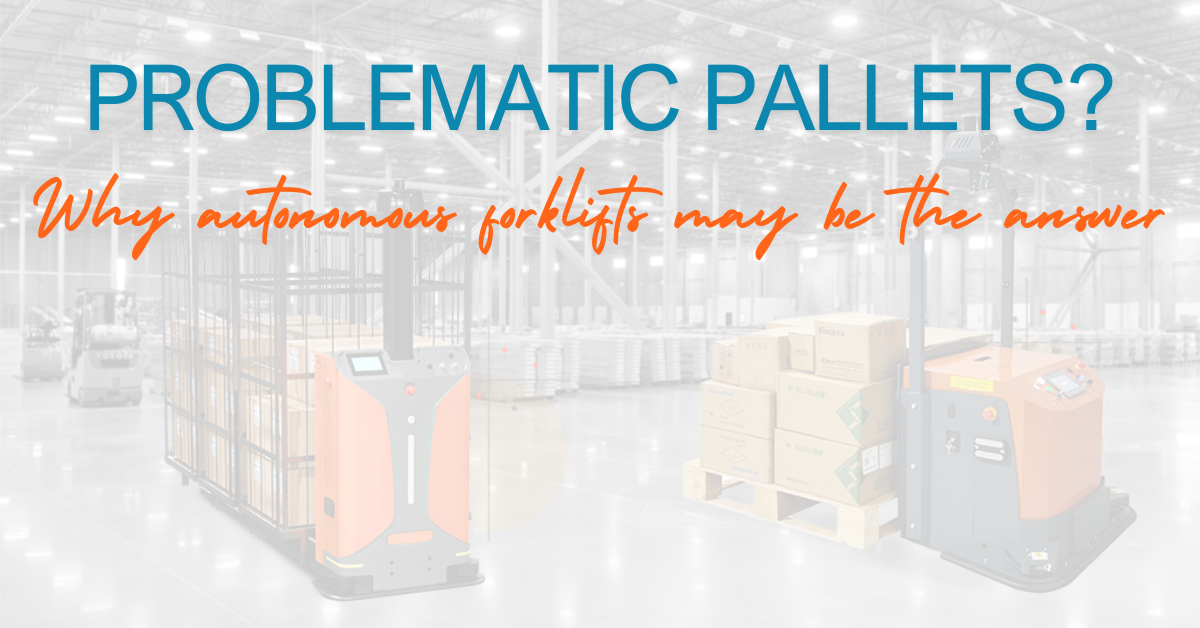


Intralogistics and picking operations have become increasingly complex, posing challenges for many businesses when scaling case-picking operations. Although large-scale picking processes are often manual, more warehouse and distribution centers are turning to automation for point-to-point material movement. And, while moving single pallets or trolleys via intralogistics or case-picking automation is a straightforward process, operations using various mobile storage units (MSUs) and different payload types can introduce complexities that many robots are not equipped to handle. Additionally, many companies do not consider the automation requirements specific to their payload types (pallets, trolleys and racks) until a problem arises.
According to Modern Materials Handling’s 2024 Intralogistics Robotics Survey, “When selecting robotics, companies use process performance, return on investment, safety and security and total cost of ownership as their key criteria.” It may sound obvious, but it’s important to highlight that the most useful automation solutions are the ones that are adaptable and suitable to a variety of tasks. When choosing robotic automation for your operations, it’s vital to consider how they will fare against the challenges outlined in the previous paragraph.
In this blog, we explore the factors that organizations should consider when moving to intralogistics and case-picking automation and how to ensure that the automation you choose is a good fit for your needs.
Pallet types and workflow requirements should be kept in mind when exploring automation solutions. Depending on the specifications of the bots you choose, you may experience persistent challenges that impact efficiency and scalability around:
To avoid these common pitfalls and ensure future scalability, businesses should look for automation solutions that can:
RELATED READ: Orchestrating Putaway Efficiency: The Symphony Of Smart Intralogistics Automation
To bridge some of these common automation gaps, GreyOrange recently added two new solutions to our Certified Ranger Network (CRN): Ranger Forklift – XXL and Ranger Forklift – AnyPallet. These new Autonomous Mobile Robot (AMR) forklifts open up new possibilities for streamlining operations and ensuring future scalability, not only through their capabilities to handle different pallet types efficiently but also to broaden the scope of case-picking applications, regardless of existing operations.
Both forklift bots can be utilized for hybrid picking, combining the strengths of automated and manual processes. They seamlessly integrate into existing workflows, improving overall productivity with the help of GreyMatter, our advanced warehouse execution system (WES), which directs them to take optimal actions.
Designed to manage multiple pallets (including pallets from de-stackers) or trolleys simultaneously, the Ranger Forklift – XXL can lift up to four trolleys or two pallets at once. With a payload capacity of up to 3000 kg, it is beneficial for:
While closed pallets are a challenge for most bots, Ranger Forklift – AnyPallet can lift them from the ground without the need for additional support or space. With a payload capacity of up to 2000 kg, it is ideal for:
The introduction of autonomous forklifts for closed pallets and heavy, varied loads fills a significant gap in intralogistics and case-picking solutions. These new robotic solutions address critical operational challenges, improve picking productivity per zone in warehouses and create new opportunities for efficiency and scalability.